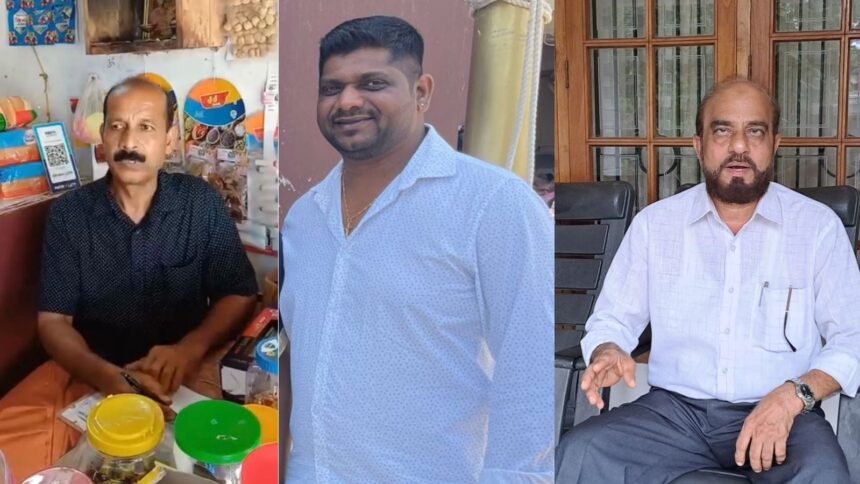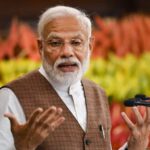As soon as Joel Pratap D’Souza, 39, read the news of the June 12 air crash in Ahmedabad, he was transported back to the middle seat in row 23 of Air India Express flight IX 812 on May 22, 2010.
Over 15 years ago, Air India Express flight IX 812, which had taken off from Dubai, overshot the Mangalore International Airport runway, fell off the cliff and burst into flames. Of the 166 people onboard that day, 158, including six crew members, died. D’Souza, a resident of Mangalore, was among the eight survivors.
“I recall the crash taking place at the time of landing. The crash had led to a crack in the plane’s body. I remember struggling with the seatbelt but I managed to remove it and get out of the burning plane. I ended up breaking my leg and suffering from a slipped disc that day — injuries that still bother me to this day,” D’Souza, who lives in Dubai and works as supervisor with a private firm, tells over telephone.
He says his body doesn’t let him forget the incident. “Every step I take reminds me of that day. I cannot run like the others or lift heavy items. I also suffer from anxiety and nightmares due to the crash. The news of the crash has just made them worse,” adds D’Souza. Though he says he was given a compensation of Rs 48 lakh, the “promise of a job at Air India never materialised”. A year after the 2010 crash, D’Souza boarded his first flight since the crash.
“I had no choice. I was working in Dubai at the time of the crash. I had to return to work after my treatment. Forget that first journey after the crash, I don’t travel alone to this day. Each time the plane starts landing, I get panic attacks. I don’t think I will be able to overcome this fear in this lifetime,” he says.
Like D’Souza, Koolikkunnu Krishnan, 62, was among the survivors of the 2010 Mangalore air crash.
At the time of his “second birth”, Krishnan, who had been working with a private firm in Dubai for nine years in 2010, says he was returning home to Kannur in Kerala after a gap of two years.
“I was in row 17, near the left wing. The flight landed but then it started shaking and swaying. Cries erupted all around. Then, the plane hit something — I thought it had rammed the terminal — and the cabin filled with smoke. Just as I thought death was certain, I looked up at the roof of the plane. A shred of light was seeping in through a crack in the fuselage,’’ says Krishnan, a resident of Kasargod in Kerala.
That crack in the fuselage, he says, led to his “second birth”. Krishnan says he slipped out of that crack and clambered over the rain-soaked fuselage. “It was raining. Since there was nothing to hold on to, I fell from the plane’s body and got stuck on a tree. A few others like me had managed to exit the plane, which was on fire,” he says.
Back on the ground, Krishnan recalls that the other survivors and him hobbled through the shrubby valley to reach a nearby railway track.
“At the track, the locals took us to a hospital. Everything was over in a matter of seconds. I only realised about the gravity of the tragedy once I was at the hospital,” he says who was in the hospital for a week.
The months that followed were tough on Krishnan who runs a grocery store in Kasargod. “Sleep eluded me for weeks. Even the thought of sitting on a bus scared me. I refused to leave the house for months after the incident. Eventually, I needed counseling to overcome my fears,’’ he says.
And overcome he did — by boarding a flight two years later from Mangalore airport. “I went to Qatar on a visitor’s visa. Since 2010, I have flown thrice — all from Mangalore airport. I last flew in 2017,” he adds.
Seated a few rows behind Krishnan’s row 17 and one row in front of D’Souza’s row 23 in the plane that day was Kannur’s K P Mayankutty. “That seat number — 22-F — is forever etched in my mind,” he says.
Then 48, Mayankutty had been working as a public relations officer (PRO) with a Dubai-based shipping firm for seven years and was flying home for his annual one-month leave.
“I had a window seat. As soon as the plane landed, it started jerking badly. Then, it hit something heavy and rolled down the hill. I started crying. One side of the plane was on fire and the flames were spreading fast. Just as I thought the smoke would kill me, I noticed the crack near my seat. Without thinking twice, I jumped out. A second’s delay and I would have been reduced to ashes,’’ he recalls.
Mayankutty says he received a compensation of Rs 5 lakh from Air India for his head injury and five-day hospital stay.
For six months after the crash, Mayankutty refused to fly. In fact, he says, he even told his employer in Dubai that “I was not coming back”. He says, “All sounds left me frightened — a machine, an engine, even a blender.”
Then, a year later, Mayankutty had to fly back to Dubai. “My son runs a printing press in Dubai and asked me to visit him. I took an Emirates flight from Kozhikode (in Kerala). Since the crash, my wife always flies with me. We had plans to visit our son in Dubai this month. After reading about the Ahmedabad tragedy, I have postponed it,” he says.








